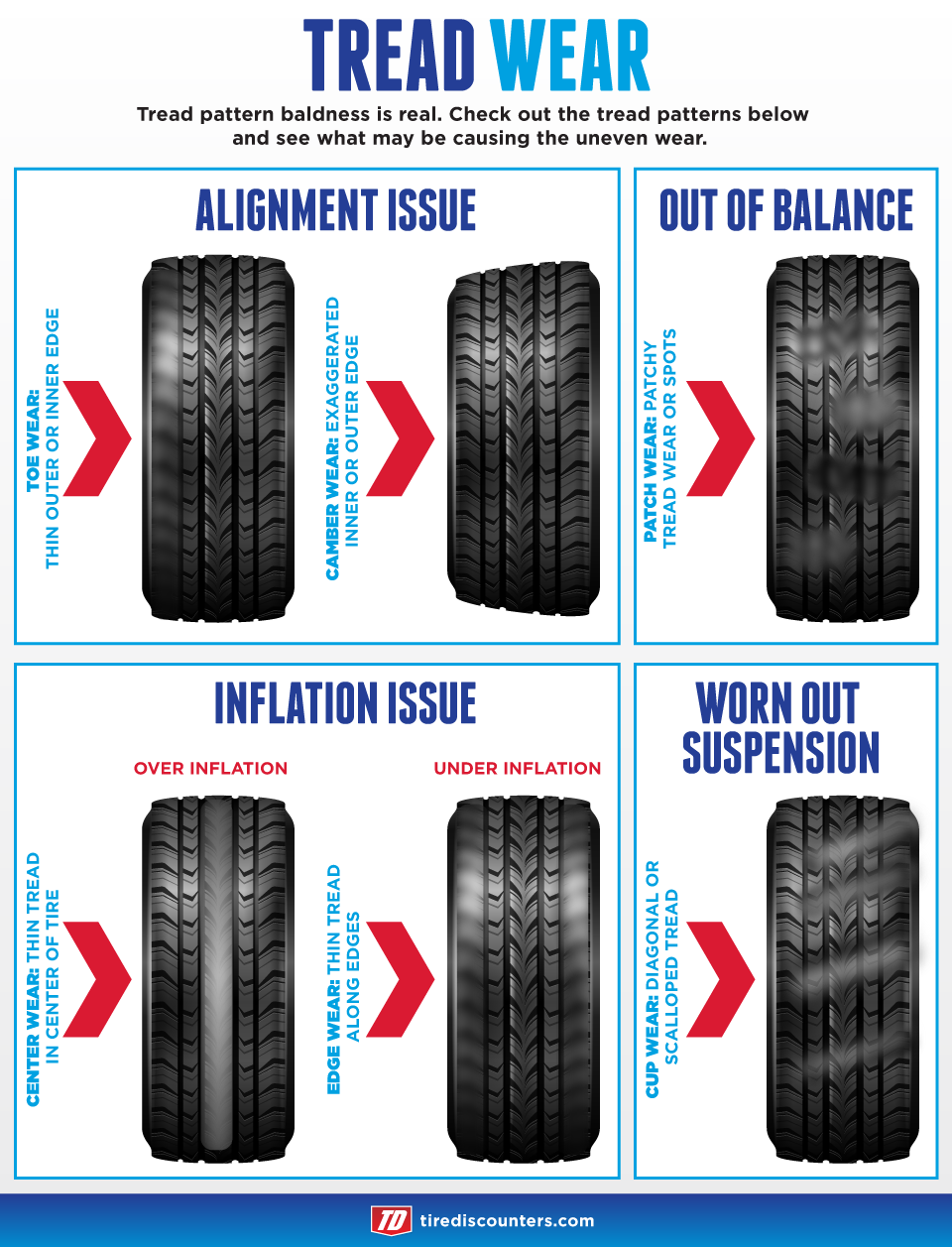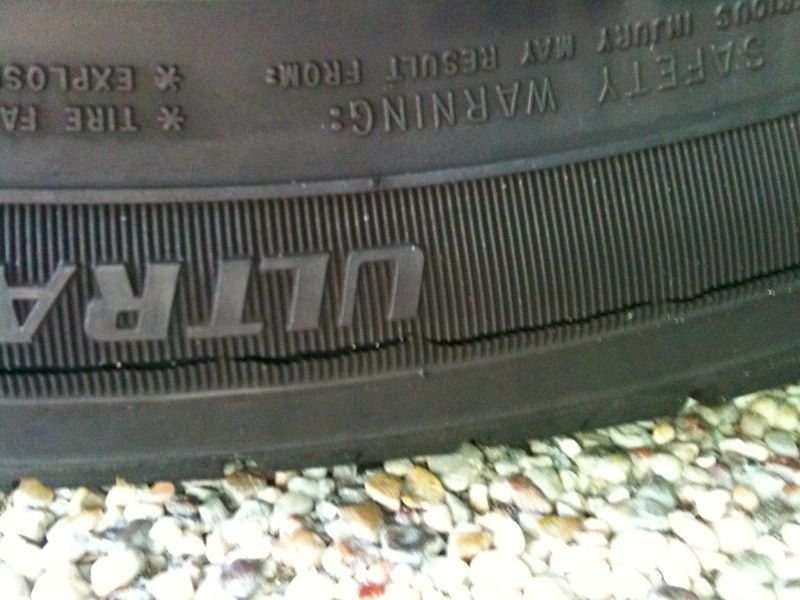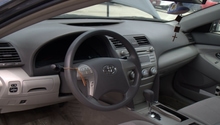Toyota Camry: Tire Diagnostic Guide
With help from this diagnostic guide, you can learn about when it's time to care for your tires.
This article applies to the Toyota Camry (1997-2011).
It's always important to make sure your tires stay in the best shape possible. Not only are they expensive to replace, but faulty tires can also make your car unsafe for you to drive.

Materials Needed
- Tire tread depth gauge
- Tire pressure gauge
- Tire iron
- Jack
- Jack stands
Step 1 – Uneven tread wear
Uneven treads will result in an unbalanced ride.
Once it becomes a problem, uneven tread wear will be easy to see, but until then you can use a tire tread depth gauge to read how much tread is left going horizontally across the tire.
- Alignment Issues - This can cause toe or camber wear. Over time, alignments eventually go out. This is especially true if you do a lot of driving on rough or pothole-filled streets. In addition, a bad alignment can also be caused by bad wheel bearings, tie rod ends, and ball joints. Usually, a bad alignment will cause the car to pull to one side or the other while driving, so this can be used as an early warning sign.
- Out of Balance Issues - This will cause spotty or patchy tire wear with no real clear pattern. The most common cause of this is a tire not being balanced correctly during installation. An early warning sign of an improperly balanced tire is a subtle shaking feeling when the car is going certain speeds.
- Tire Pressure Issues - This will cause the outer edges to wear if under inflated and the center section to wear if over inflated. It's important to regularly check the pressure in your tires. No tire creates a 100% perfect seal, so over time the pressure will drop. In addition, tire pressure will fluctuate with the air temperature. Generally speaking, over-inflated tires will ride rougher and under-inflated tires will ride with a spongy feeling.
- Worn Suspension Issues - This will cause the tire to wear in a diagonal pattern. The most common cause of this is worn out shocks or struts.

(Related article: How to Jack up Your Car - CamryForums.com)
If the tread wear is uneven on any of the tires, then continue to Step 2. If it is even, then go to Step 3.
Step 2 – Premature/excessive tread wear
Determine the factors in the tire's wear.
If your tire exhibits any of the wear patterns shown above in Step 1, you'll want to get that problem corrected first. All of those items can cause premature or excessive tire wear. If the tires are the ones it rolled off the dealer lIf your tire exhibits any of the wear patterns shown above in Step 1, you'll want to get that problem corrected first. All of those items can cause premature or excessive tire wear. If the tires are the ones it rolled off the dealer lot with new, then long tread life shouldn't be expected. These tires are well known to wear out after 25 - 30k miles. However, if the tire tread is even across yet still wearing excessively fast, then you most likely have an issue with the tire itself. The majority of tire brands will offer a warranty with the tire, so the first step is to always contact them first. If your excessive wear includes the tire tread breaking off in chunks, then the tire might be dry rotted as well. The cause of this is worn out shocks or struts.

If your set of tires are not affected by the above wear issues, then continue to Step 3.
Step 3 – Car pulls to one direction
The car may need to be aligned.
The most common cause of the car pulling in one direction or the other is a bad alignment which causes the tire to wear on the inner or outer edge. From the factory, though, the car will come with the camber slightly out to allow for better handling characteristics. To counteract this from causing the tire to wear unevenly thus causing the car to pull to one side, you'll want to make sure you rotate the tires every 5 - 8k miles. Also, get an alignment every 30k miles; it's worth it for the peace of mind.
Another cause is bad wheel bearings. This only occurs in higher mileage cars in the 80k+ mile range. A bad wheel bearing will be accompanied by a howling or a roaring noise coming from that wheel as you increase speed. The noise will generally go away if you are turning in the same direction as the side of the car the wheel is on since it unloads all the weight from that wheel. It's important to replace wheel bearings as soon as they begin to wear out; otherwise, over time the built up friction can eventually weld the bearing together which can completely shear the wheel off.
The last cause is a dragging brake caliper, this means the brake pad is never fully coming off the rotor. The first way to test for this is to go for a drive, do a lot of hard braking, and then quickly get out and look at the wheels on the side of the car it's pulling in. The rotor should be a lot hotter than any of the others to the point that it's glowing. The second way to test is to pull off the wheels and inspect the rotors themselves between the two sides; the wear should be pretty close to even. A dragging caliper will cause the rotor to have a deeper groove in it.
If the vehicle has been aligned and drives straight, then go to Step 4.
Step 4 – Tire is losing pressure
Is it a slow leak or just age?
If the tire pressure in your car keeps dropping, you most likely have picked up a nail or have a cracked sidewall that's allowing a slow leak. Don't go out and try to get the tire fixed the first time you see the pressure drop though; instead, fill the tire and see if it drops again. If it doesn't drop again, the low pressure was most likely due to just age of the last fill or temperature fluctuation. If it does drop again, then you'll need to go visit a tire shop and see if it can get patched or if you'll need to replace it.
If the sensor in your car is saying your tire pressure is dropping, but the actual pressure in the tire is staying constant, then you most likely have an issue with the TPMS sensor on that wheel. While not common, these can get damaged when installing new tires as they do fail over time and need to be replaced.

If the tire is not losing pressure, then proceed to Step 5.
Step 5 – Squealing tires
The sound could be coming from the behind the wheel.
The most common cause of squealing tires while driving is brake pads that need to be replaced. A lot of brake pads come with what is called a squealer tab. It's basically a metal tab that, when the brake pads get below a certain wear point, it's allowed to make contact with the rotor to make a noise to let you know it's time to change the pads. The next common cause would be a bad alignment, but the alignment would normally need to be bad enough where the car is pulling hard in one direction.

Related Discussions
- Suspension Brakes Tires Wheels - CamryForums.com
- Excessive Tire Wear - CamryForums.com
- Front Wheel Bearing Noise - CamryForums.com
- Wheel Bearings - CamryForums.com
- Alignment Issues - CamryForums.com
- Tire Pressure Monitor System Error - CamryForums.com






